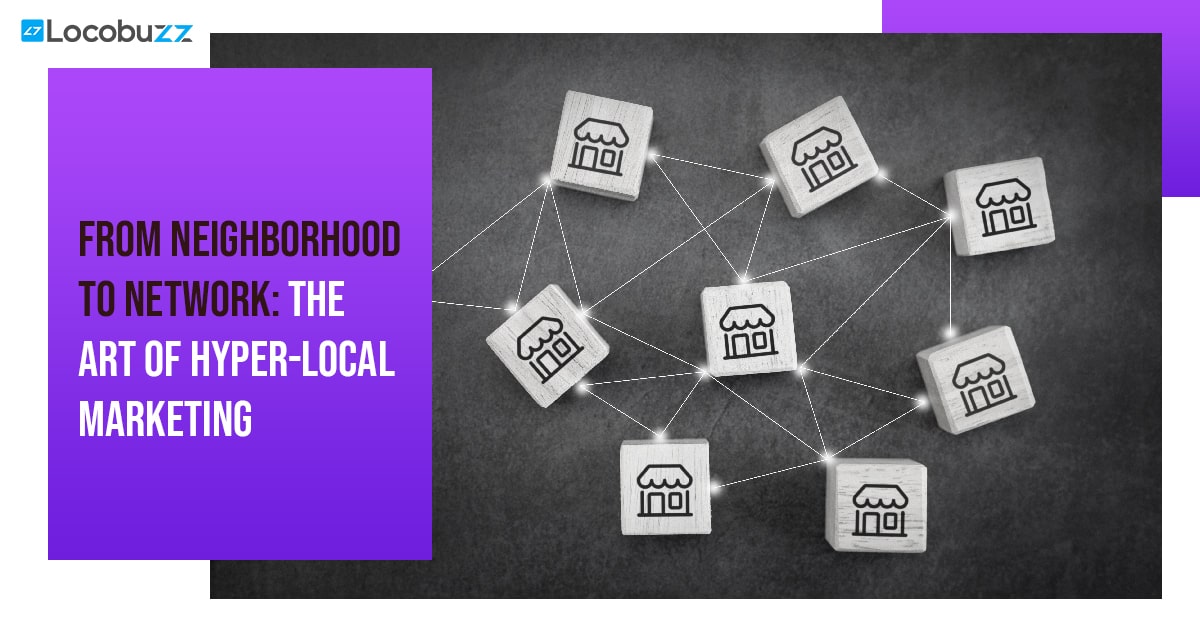The Complete Guide to Using Sentiment Analysis

Companies want their brand to be perceived positively in the public eye and stay ahead of the competition. To keep the consumers interested in their products and services, the brands strive to tap into their emotions, such as satisfaction, appreciation, interest etc.
It plays an important role in determining the longevity of the brand. However, customer experiences differ from one another, and you may receive positive, negative and neutral emotions altogether for your brand. Thus, it is crucial to manage and monitor, which can be achieved through sentiment analysis.
It enables brands to gain an overview of a larger audience with comprehensive data and prioritise the brand mentions according to their urgency. Right from posts, reviews, feedback, to blogs, and articles. So the brands can strategize the plan of action to respond them.
Let us take an indepth look into it and know exactly how to make use of it.
Table of Contents
What is sentiment analysis?
Sentiment analysis is the process of recognizing customers ‘ emotions and their tone about the brand’s products and services expressed through online platforms.
To deduce effective conclusions it helps in –
- Data mining
- Filtering results
- Extracting the opinion of the consumers out of the data.
- Monitoring conversations
- Evaluation of languages
- Voice inflection to measure attitudes, feelings and opinions.
It is the most important process as all other key social media strategies and website analytics like image recognition, social media analytics, customer experience analytics, social listening and monitoring depend on it and are more insightful.
Importance of sentiment analysis in brand building
According to vouchercloud.com, 2.5 quintillion bytes of unstructured texts and data is created every day.Understanding and sorting this data in form of reports can be tough and time-consuming.
This is where sentiment analysis comes into the picture; making it manageable for brands to procure valuable data using AI-driven automated tools and algorithms. Sentiment analysis that can benefit in building your brand more effectively because –
- With the help of automated processes it enables the brand to process data efficiently with a time frame.
- It is cost-effective and consumer-friendly as the brand can sort all kinds of online data at scale.
- It allows the brand to maintain an objective approach by keeping the algorithm accurate, and equal for all mentions.
- It allows the brand to set real-time alerts to get prompt notifications of the mentions.
- It helps the brand to understand its audience by primarily targeting them with the right demographics, track their conversational tone, optimize the content and modify the approach before negative comments blow up.
- It provides customers’ history, past behaviours and strategic data of the competitors so that the brand can create effective future marketing strategies.
- Helps in instant customer service, especially during a crisis.
How to use sentiment analysis for brand building?
Social media monitoring
Social media platforms give consumers the liberty to express their experiences and emotions freely regarding a brand’s products and services. Monitoring these online consumer sentiments is one of the most pertinent criteria to quantify the brand’s online marketing results and efforts.
It centres around not only the brand’s online content but also the context of the user’s opinion. Technology platforms like Mention, Locobuzz, Social Searcher, RapidMiner, etc provides social monitoring tools to analyze consumer sentiment and offer clear data visualizations. Brands can execute sentiment analysis strategies in social media monitoring in the following ways –
- analyze tweets and facebooks posts of targeted audiences to observe the sentiment analysis in a certain period.
- perform sentiment analysis on all the brand mentions over social media platforms, websites, apps, etc, determine the order of urgency and subsequently respond.
- Generate insights by using other filters to have a better understanding of the audience.
Customer support
Even though you’ve integrated chatbot, mail support and call centre, social media is the place where consumers seek solutions to their queries most of the time. This is where sentiment analysis can be useful to identify people who are looking for online assistance.
A seamless customer experience results in revenue growth and improves customer retention. A brand can boost its credibility by performing sentiment analysis on customer support to analyse customer interactions; arranging unsatisfied customers and their complaints on the top.
Brands can oversee their support team using filters to redirect tickets, target each customer to provide uninterrupted experience and services. Locobuzz is a unified customer service platform that provides multiple AI-led services like social media management, social listening tools, analytics and insights, and conversational chatbots to grow your business.
With these features, no comments, questions, complaints or issues remain unanswered. It provides comprehensive data to quickly visualize customer’s sentiment regarding the brand’s marketing campaign, posts, ads, etc.
Customer feedback
Listening to what consumers have to say about their experience with your brand is crucial to improve and make a mark. The voice of the customer (VOC) involves gathering feedback, data, direct observations, Surveys, Interviews, Focus groups, Complaint data, review data etc.
It mainly functions on sentiment analysis, a positive voice results in opportunities, whereas negative leads to adverse effects on the business and higher churn. However, having a customer-centric approach stimulates customer satisfaction, thus, better feedback and customer experience.
With the help of sentiment analysis, a brand can identify the voice of customers, respond instantly and design actions to improve services and natural data flow in future. It provides a plethora of data, which empowers the aligning the customer support as well the sales team to work more efficiently to fulfil customers needs and desires.
Competitors benchmarking
Every brand strives to stay ahead of its competitors. Sentiment analysis helps the brand with market research so that it can create better marketing strategy content for its product and services to be competitive.
It provides the algorithm that enables the brand to analyse customer’s attitudes towards new content, product and services in the market by your competitors and understand their opinion. This helps in anticipating how consumers would perceive your brand if you were to launch updates or new products.
Product analysis
Negative sentiments are one of the aspects that ruin the online brand reputation. These unsatisfactory emotions of the consumers can lead to higher churn rates; radically affecting the sales. Now, this can be considered critical customer feedback. Because, it can be possible that several customers are facing an issue with your product and services, which could be a significant suggestion for updates.
Implementing sentiment analysis on product analysis can lead to the evaluation of all the brand mentions for a specific product, analyze all the online comments, group conversations, and posts, and track customers’ opinions about your product. Moreover, procure all the required data to offer your product development team to improve and make customers happy.
What is Sentiment Analysis Score?
What is Social Media Sentiment Analysis?
Social media sentiment analysis is the process of analyzing social media conversations to understand the sentiment and opinion of users towards a particular topic, brand or product.
It involves the use of natural language processing (NLP) and machine learning techniques to identify, extract and classify sentiment from social media data. Social media sentiment analysis can help brands to identify customer opinions, measure brand reputation, and improve customer engagement.
How to Get Started with Sentiment Analysis for Your Brand?
To get started with sentiment analysis for your brand, you need to define your objectives and goals for sentiment analysis, select a sentiment analysis tool or software that suits your needs and budget, and identify the data sources you want to analyze.
It is also important to set up a data cleaning process to remove irrelevant or inaccurate data before analyzing the sentiment. Additionally, it is recommended to seek help from experts in the field of sentiment analysis to ensure accuracy and effectiveness of the analysis.
How Does Sentiment Analysis Work?
Sentiment analysis uses natural language processing (NLP) and machine learning algorithms to analyze and classify sentiment from text data. The process involves several steps, including text preprocessing, feature extraction, sentiment classification, and evaluation. Text preprocessing involves cleaning and normalizing the text data to remove noise and irrelevant information. Feature extraction involves identifying relevant features from the preprocessed text data, such as words, phrases, and sentiment indicators.
Sentiment classification involves using machine learning algorithms to classify the sentiment of the text data as positive, negative or neutral. Finally, evaluation involves assessing the accuracy and effectiveness of the sentiment analysis model.
Sentiment Analysis to Improve Brand Reputation and Drive Revenue
By using sentiment analysis to monitor customer feedback, businesses can improve their brand reputation and drive revenue. Here are some ways sentiment analysis can help achieve these goals:
Identify customer pain points: By analyzing customer feedback, businesses can identify pain points and address them in a timely manner. This can lead to increased customer satisfaction and loyalty.
Improve product development: By analyzing customer feedback, businesses can identify areas where their products or services need improvement. This can lead to better products and services that meet customer needs.
Monitor competitors: Sentiment analysis can also be used to monitor competitors and gain insights into how they are perceived by customers. This information can be used to inform business strategy and gain a competitive edge.
Improve customer service: By quickly addressing customer concerns and complaints, businesses can improve customer service and demonstrate their commitment to customer satisfaction.
Sentiment analysis is a process that involves using natural language processing (NLP) and machine learning techniques to identify the emotional tone of a piece of text. It involves analyzing text data, such as social media posts, product reviews, customer feedback, and news articles, to determine whether the writer has expressed positive, negative, or neutral sentiment towards a particular topic or entity.
Types of Sentiment Analysis
Fine-grained sentiment analysis
Aspect-based sentiment analysis
Emotion detection
How Sentiment Analysis Works
Sentiment analysis works by analyzing text data using NLP and machine learning algorithms. The process involves the following steps:
Data collection
The first step involves collecting text data from various sources, such as social media platforms, customer feedback forms, and news articles.
Text preprocessing
The collected data is then preprocessed, which involves cleaning and preparing the data for analysis. This step includes removing stop words, converting text to lowercase, and removing punctuation marks.
Sentiment analysis algorithm
Once the data is preprocessed, a sentiment analysis algorithm is used to analyze the data. The algorithm assigns a sentiment score to each text, which represents the degree of positivity or negativity expressed in the text.
Evaluation
Finally, the results of the sentiment analysis are evaluated to identify patterns and insights, which can be used to improve business strategies and decision-making.
Challenges with Sentiment Analysis
While sentiment analysis can provide valuable insights into customer sentiment, there are several challenges associated with this process. Some of the common challenges include:
Language ambiguity
One of the biggest challenges with this is dealing with language ambiguity. Words and phrases can have different meanings in different contexts, which can make it difficult to accurately determine sentiment.
Sarcasm and irony
Sarcasm and irony can be difficult to detect using the algorithms, as the sentiment expressed in the text may be opposite to what the words actually mean.
Multilingual data
Sentiment analysis algorithms may not perform well on multilingual data, as different languages may have different sentence structures, idioms, and cultural contexts.
Lack of context
The algorithms may not be able to accurately determine sentiment without proper context. For example, a negative review of a product may not necessarily mean that the product is bad, but could be due to the customer’s personal preferences.
How social media monitoring can help track customer sentiment
How sentiment analysis can improve customer support
Being responsive to feedback is an important aspect of using sentiment analysis
Being responsive to feedback is an important aspect of using sentiment analysis effectively for brand building. Here are some key points to keep in mind:
Actively listening to customer feedback can provide valuable insights into how your brand is perceived. It’s important to monitor a range of sources for feedback, including social media, reviews, and customer service interactions.
Negative feedback can be an opportunity to learn and improve, but it’s important to respond promptly and appropriately to address customer concerns. This can involve apologizing for any issues, offering solutions or compensation, and following up to ensure customer satisfaction.
Feedback can provide valuable insights into customer needs, preferences, and pain points. It’s important to use this feedback to inform brand building strategies, such as product development, marketing campaigns, and customer service improvements.
Sentiment analysis should be viewed as an ongoing process that evolves over time. It’s important to continuously monitor and adjust sentiment analysis processes based on feedback and analysis results to ensure accuracy and relevance.
By being responsive to feedback, businesses can use sentiment analysis to build strong relationships with customers and improve brand reputation over time.
Sentiment analysis for brand building in different industries and sectors
Sentiment analysis can be applied to brand building in a wide range of industries and sectors. Here are some examples of how sentiment analysis can be used in different industries:
Sentiment analysis can help retailers understand customer sentiment about their products and services, as well as their in-store experiences. By analyzing sentiment, retailers can identify areas for improvement and adjust their marketing and advertising strategies to better appeal to their target customers.
In the hospitality industry, sentiment analysis can help hotels and restaurants understand customer sentiment about their experiences. This can include sentiment analysis of customer reviews on platforms like TripAdvisor or Yelp, as well as social media sentiment analysis. By analyzing sentiment, businesses in the hospitality industry can identify areas for improvement and make changes to enhance the customer experience.
Sentiment analysis can be applied to the healthcare industry to understand patient sentiment about healthcare providers, facilities, and treatment options. Healthcare providers can analyze patient feedback to identify areas for improvement and enhance patient satisfaction and outcomes.
In the financial services industry, sentiment analysis can help businesses understand customer sentiment about their products and services, as well as their customer service experiences. By analyzing sentiment, financial services providers can identify areas for improvement and adjust their marketing and advertising strategies to better appeal to their target customers.
Sentiment analysis can be applied to the automotive industry to understand customer sentiment about vehicles, dealerships, and service experiences.
How sentiment analysis can help analyze customer feedback
Sentiment analysis can be used to analyze customer feedback, such as product reviews and surveys, to determine the sentiment expressed by customers. This can help identify common issues and areas for improvement.
Sentiment analysis can be a powerful tool for building and improving your brand’s reputation. By monitoring social media, improving customer support, and analyzing customer feedback, you can use sentiment analysis to improve the customer experience and build a strong brand.
Competitor Benchmarking
How sentiment analysis can help with competitor benchmarking
Using sentiment analysis for crisis management and reputation management
Sentiment analysis can be an effective tool for crisis management and reputation management. Here’s how:
This can act as an early warning system for businesses. By monitoring sentiment about their brand and products on social media, businesses can quickly detect negative sentiment and respond proactively to prevent the situation from escalating.
It can help businesses respond to crises quickly and effectively. By understanding the sentiment behind negative feedback, businesses can develop an appropriate response that addresses customer concerns and mitigates damage to their reputation.
This will surely help businesses manage their reputation online. By monitoring sentiment across various channels, businesses can identify areas where they need to improve and take steps to address any negative sentiment.
Customer communication: This analysis can help businesses communicate with their customers effectively during a crisis. By understanding the sentiment behind customer feedback, businesses can develop communication strategies that are more likely to resonate with their customers.
Competitor analysis: By using this analysis it can also be used to analyze the sentiment surrounding competitors. By monitoring sentiment about competitors, businesses can identify areas This powerful analysis can be a powerful tool for businesses to manage crises and maintain their reputation. By monitoring sentiment about their brand, products, and competitors, businesses can respond quickly and effectively to any negative sentiment and prevent damage to their reputation.
Examples of companies using sentiment analysis for competitor benchmarking
Many companies are using sentiment analysis to benchmark themselves against their competitors, such as PepsiCo, which uses sentiment analysis to monitor social media conversations about its products and its competitors.
By analyzing the sentiment towards its products and its competitors, PepsiCo can identify areas where it can improve its products and marketing strategy to differentiate itself from the competition.
PepsiCo the American multinational giant started to listen to people’s sentiments after an ad campaign done with Kendall Jenner. The ad campaign did not perform well and gained a lot of attention.
Sentiment analysis can be a valuable tool for analyzing customer feedback, benchmarking against competitors, and improving your brand’s reputation. By using sentiment analysis to monitor social media, improve customer support, analyze customer feedback, and benchmark against competitors, you can build a strong brand and drive revenue growth.
Product Analysis a Vital role in Customer Sentiment
When it comes to brand building, sentiment analysis can play a vital role in analyzing customer sentiment towards specific products or services. This analysis can provide valuable insights into customer needs, preferences, and pain points. Here are some ways in which sentiment analysis can be used for product analysis:
Identifying product strengths and weaknesses: By analyzing sentiment, businesses can identify the specific features or aspects of a product that customers like or dislike, gaining insights into areas of excellence and improvement.
Monitoring product reviews and feedback: Sentiment analysis helps businesses to monitor and analyze customer reviews and feedback about specific products, enabling them to identify common themes or issues affecting customer satisfaction.
Comparing products against competitors: Sentiment analysis can also be used to compare customer sentiment towards your products against those of your competitors. This enables businesses to identify areas where their products are falling short, as well as areas where they are outperforming the competition.
Making data-driven product decisions: Businesses can make data-driven decisions about product development, marketing, and pricing strategies by analyzing customer sentiment towards specific products. This helps to improve product quality, customer satisfaction, and overall business performance.
To use sentiment analysis effectively for product analysis, it’s crucial to have a clear understanding of the specific metrics and data points most relevant to your business. By focusing on the right data, businesses can gain valuable insights into customer sentiment towards their products and make informed decisions to drive business success.
How sentiment analysis can help with product analysis
Best practices for using sentiment analysis for brand building
Here is a breakdown of best practices for using sentiment analysis for brand building
Define clear objectives: Before using sentiment analysis, it’s essential to define clear objectives for what you want to achieve. This could include monitoring brand reputation, identifying customer pain points, or tracking campaign performance.
Choose the right tools: There are many tools available for sentiment analysis, each with different features and capabilities. It’s crucial to choose a tool that aligns with your objectives and provides accurate results.
Choose the right data sources: Sentiment analysis can be applied to various data sources, including social media, customer feedback, and product reviews. Choose the data source that aligns with your objectives and provides relevant insights.
Develop a comprehensive strategy: Sentiment analysis should be integrated into a broader brand building strategy. Develop a comprehensive plan that outlines how sentiment analysis will be used, who will be responsible for analyzing the data, and how insights will be applied.
Ensure data accuracy: Sentiment analysis is not foolproof and can sometimes provide inaccurate results. It’s essential to verify the accuracy of the data and ensure that the analysis is based on relevant and reliable sources.
Take timely action: Sentiment analysis provides real-time insights that can help identify potential issues or opportunities. It’s essential to take timely action and respond to customer feedback or issues promptly.
Measure success: Sentiment analysis is only valuable if it helps achieve your objectives. It’s essential to measure the success of your sentiment analysis efforts and make adjustments as needed.
Ensure accuracy and relevance of data sources: The accuracy and relevance of data sources is critical to the effectiveness of sentiment analysis. It’s important to ensure that the sources you use are up-to-date, reliable, and relevant to your target audience. This can involve monitoring a range of sources, including social media, reviews, and customer feedback.
Be transparent about your use of sentiment analysis: It’s important to be transparent about your use of sentiment analysis to build trust with your customers. This can involve explaining how sentiment analysis is used and what data sources are monitored. It’s also important to provide customers with opportunities to provide feedback and ensure that feedback is incorporated into sentiment analysis processes.
Be responsive to feedback: Sentiment analysis should be viewed as an ongoing process that evolves over time. It’s important to be responsive to feedback from customers and adjust sentiment analysis processes as needed. This can involve revising data sources, adjusting sentiment analysis algorithms, or revisiting analysis results to ensure accuracy.
By following these best practices, businesses can use sentiment analysis effectively to inform brand building strategies and build strong relationships with customers.
Locobuzz as a tool for Sentiment Analysis
Locobuzz is a comprehensive social media analytics and customer experience management platform that offers advanced sentiment analysis capabilities. It uses machine learning algorithms to detect and classify the sentiment of customer feedback in real-time, providing businesses with a deep understanding of customer sentiment and needs.
Locobuzz sentiment analysis algorithms are trained to detect and classify sentiment across multiple languages and dialects, including slang, idioms, and colloquialisms. This ensures that businesses get a complete and accurate picture of customer sentiment across all channels and touchpoints.
Locobuzz sentiment analysis goes beyond simple positive, negative, and neutral classification. It takes into account the intensity and context of customer sentiment, providing businesses with a more nuanced understanding of customer feedback. This enables businesses to make data-driven decisions that improve customer satisfaction and loyalty, increase sales and revenue, and enhance brand reputation and performance.
Locobuzz sentiment analysis is also highly customizable, allowing businesses to tailor their analysis to specific products, services, or customer segments. This ensures that businesses get the most relevant and actionable insights from their data.
In addition to its advanced sentiment analysis capabilities, Locobuzz also offers a range of other features to help businesses manage their customer experience, including social media listening and monitoring, social media engagement, ticket management, and customer journey analytics.
Locobuzz is an industry-leading platform for sentiment analysis and customer experience management, providing businesses with the tools they need to gain a deep understanding of customer sentiment and needs, improve decision-making and strategy, and enhance brand reputation and performance.
Conclusion
Sentiment Analysis identifies customer sentiments with the combination of Natural Language Processing, artificial intelligence, and biometrics.
Locobuzz enables building the brand with its sentiment research that analyzes consumer sentiments not only about your brand but also your competitors through all of their online mentions over posts, reviews, comments etc.
It helps you in setting a benchmark against your competitors by comparing the voice of consumers, sentiment scores and customer relatability. This helps the brand to understand their customers’ interests, purchase journey, and overall experience. So that it can build the brand customer friendly from all aspects.























